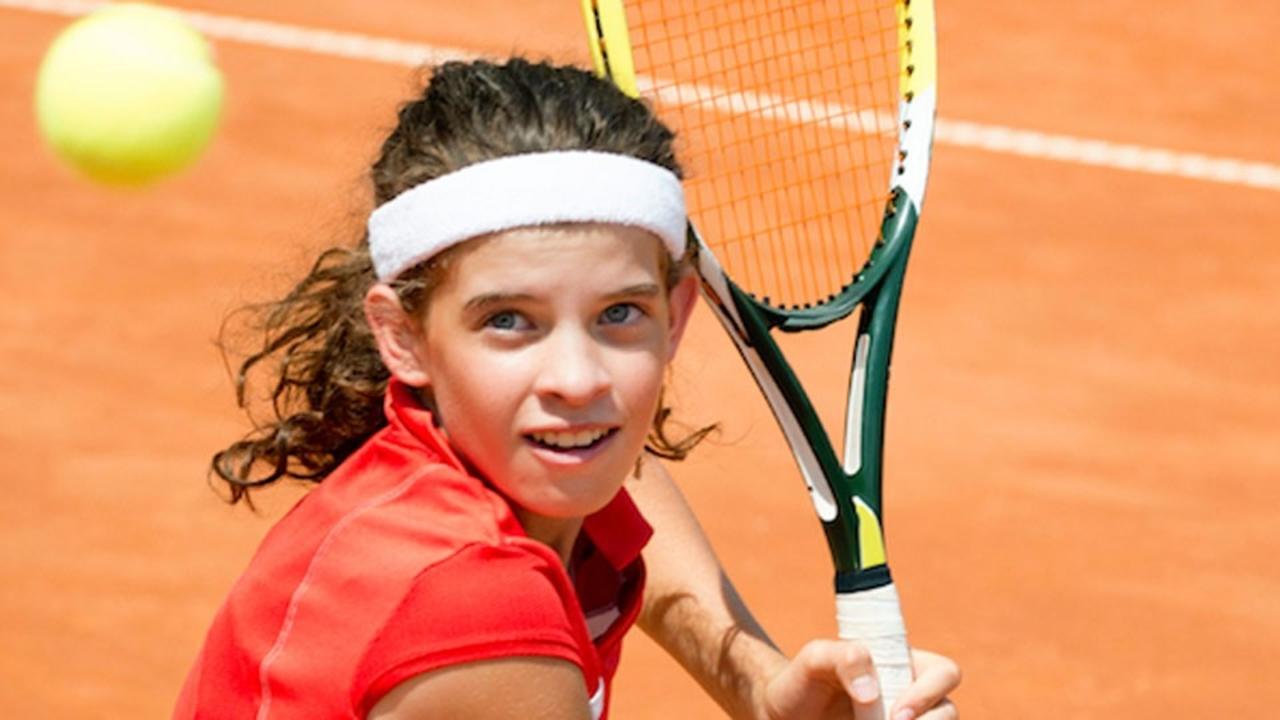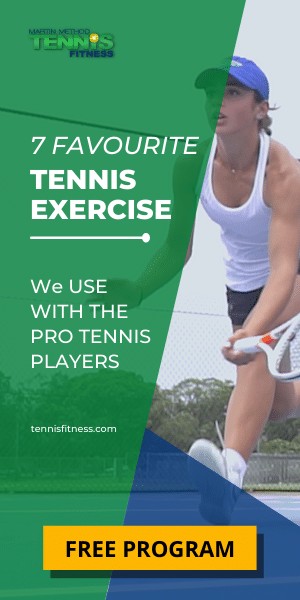Tennis Fitness Drills for Kids
Jun 15, 2018
There seems to be a few common threads these days with young tennis athletes. We lose so many kids to other sports, to injury, and to lack of motivation. Having close relationships with many junior coaches, working with young tennis athletes over the past decade, and attending junior tournaments. I have noticed some common issues with young athletes and the game they play, issues that seem to be sliding in the wrong direction. These issues are in my opinion easy to address, however, the attitude needs to be right and the environment the athletes are in need to be able to sustain the changes.
At Martin Method we are so passionate about what we do and really want to make a difference. For this reason, we want to share with you our core principles, the way we structure our junior tennis fitness drills for kids.
Tennis Fitness Drills for Kids
-
TENNIS FLEXIBILITY
The Value Of A Flexible And Mobile Athlete!
Teaching young athletes how to prepare their bodies for performance is crucial for long term injury prevention and constant physical development.
After performing 100s of junior tennis fitness assessments, postural screens, and flexibility assessments we have found most young athletes are falling short with their flexibility and mobility ranges.
Flexibility and mobility are aimed at mobilizing joints and elongating muscles throughout the body. It is important to have healthy tennis players carry minimum tension throughout their bodies, especially certain areas that get heavily used. Having a “long and strong” young athlete should be your focus. If young tennis players aren’t flexible it is very hard to build the essential layers of strength, power, and speed.
Here are some great dynamic flexibility exercises for junior tennis players:
-
TENNIS STRENGTH AND CORE DEVELOPMENT
Before you start trying to get faster and more powerful, you need to build a solid strength foundation.
We believe strength is ‘King”
Having a strength plan is vital for injury prevention, boosting performance, and building a confident player. In our opinion, performing a tennis strength program for a young tennis athlete should be the first step in preparing them for future development. No matter how good your player is now, without a good strength foundation they will not reach their true potential. We are very passionate about Junior Strength Training and one thing I can promise you, if you don’t do it correctly from the start, you are going to have problems down the track! (Injuries and physical frustration stop most young athletes from playing). It is important to get educated on this topic as there are things you can do wrong e.g. training young players like adults, getting them lifting weights too early, not teaching them the right technique.
Stick with us, we will show you what to do.
Here are some tennis core and balance exercises we use with Junior Tennis Players:
This video is a demonstration only; it is not a program. Before completing a program, a player must learn how to do the “fundamental movements”
-
FORCE ABSORPTION AND FORCE EXPRESSION
Learning how to absorb force before you express force is important for young players. This means teaching junior tennis players firstly how to stop or brake before we teach them how to accelerate or have an explosive first step.
Force Absorption - Most players focus on power and acceleration. Research shows us that having the ability to absorb force through the correct chain of movement and technique gives athletes the ability to have better movement preparation, prevent injuries, and have the capacity to be more dynamic. This is a vital area to train, to allow the body to adapt and be better prepared for absorbing force when on court. This is the most undertrained area in young players and it is the one area we focus on initially that boosts performance dramatically.
Force expression – This is when a player produces force e.g. takes off for a drop shot hits a serve or jumps. Force expression is generating initial power or acceleration, creating that first-step quickness and generating dynamic groundstrokes. It’s important to remember if you are unable to force absorb, you will be limiting your ability to express force.
-
STRENGTH FUNDAMENTALS
Learning the “6 Strength Fundamentals” is one of the most critical components of off-court training for young players. At ‘Martin Method Tennis Fitness’ we recommend all young players aged 16 and under start out by learning and then performing these 6 fundamental movement patterns.
- Squat
- Lunge
- Push
- Pull
- Rotate
- Bend
When young players can consistently complete all the 6 movement patterns, with good form, only then should their junior tennis strength program progress. E.g lifting load.
Strengthening up these movements will enable athletes to move better, have more power, and recover more effectively. When they start to lift a load, if they do not have these fundamental movements correct, it can be detrimental to their long-term success and injury rate. As young athletes physically develop we need to ensure they are moving symmetrically and strengthening the right areas of their bodies.
Performing these basic fundamental strength exercises on a regular basis will give young tennis players a great platform to build on in the future. It is the best way to educate them on good functional biomechanics and help prevent tennis injuries.
-
TENNIS FOOTWORK/MOVEMENT
Movement and footwork is another crucial area all young tennis players need to get right. ‘Tennis Fitness, Martin Method” footwork patterns have six steps that we use daily with our players. Once you understand the six types of footwork steps used on the tennis court, then you can plan your tennis training around the footwork steps you feel need more work.
- PREP STEPS/READY STEPS- Are small controlled steps that are used when preparing to set-up for a shot. Instead of taking large forceful steps, it is better to take small controlled rapid steps, which allows for better body position and the ability to change direction at the last moment if needed. Prep steps are generally used when moving forward to the ball or when a player has time on their groundstrokes.
- SPLIT STEP - The split step is a fundamental step for all players. It is important to get it functioning right and use it as often as possible. The split step is generally used when starting a dynamic movement such as returning serve or preparing to move to hit a groundstroke. The split step is performed by pushing up the toes, jumping a few inches in the air, and dynamically moving towards the direction of the ball.
- FIRST STEP – The first step is one of the most important factors in a dynamic court movement. The nature of tennis means that players rarely run more than five meters in one direction during most points, so that quick first step is essential. The first step is the one taken directly after the split step or the first step taken in any direction. We generally consider the first 2-3 steps part of the first step (acceleration). The first step is as much about attitude and mentality, as it is about the physicality of it. Having an aggressive and assertive approach to your first step will help promote a good dynamic court movement.
- CROSS OVER STEP - Many players use the cross over step when changing direction moving laterally. It is an efficient way to set-up the initial lateral movement. By taking the outside leg and crossing it over the inside leg, players can then go into a lateral shuffle.
- TRANSITIONAL - The steps taken when changing direction on the court are known as transitional steps. These steps are critical for moving quickly around the court as they provide players with more time. Transition steps are performed through multi-directional movements. Once a movement has finished, such as wide forehand being hit, the transition step is the first one taken in a multi-directional plane (diagonal, lateral, forward, or backward). We typically refer to the transition step (load and lean) when pushing off in a diagonal plane.
- MULTI-DIRECTIONAL STEP – These steps are placed on nearly every point played in tennis. They are a combination of steps 1-5, as well as the movement between each shot. Possessing good multi-directional movement or change of direction gives players the ability to maintain good posture while getting themselves in the best position more often. Effective multi-directional steps lead to an increase in court agility and fluid movement.
Now you have an understanding of all the six-foot work steps you use on the court. It’s time to train those steps you feel are letting you down on the court. Watch the video below it demonstrates the steps we were talking about.
Here are some tennis fitness footwork drills we do with our tennis players:
Here is the hard truth –
Social media and the so-called ‘gurus’ can all lead us down the path of no return and away from the tennis results we seek.
I myself have been guilty of heading down this road from time to time, and while yes it's definitely fun watching someone standing on a Swiss Ball Juggling Dumbbells, there are a few questions I should be asking myself….
Who is the exercise for?
What is this exercise supposed to do?
Is there a transfer? Transfer to a specific sport, movement or just to make our reflection in the mirror slightly more flattering?
These three import questions are what I like to call the ‘WHY’…..
Why is it important to ask these 3 question's you ask? Simple because its vital we utilize specific tennis exercises, that have a direct transfer to the results we are after.
Anyone can go on youtube and look at tennis fitness drills for kids, videos and get a bunch of drills, but having a structure and purpose and most importantly a progression is the only way to get it right.
Having done this for a long time at every level, this is what needs to happen if you want to see your player be the best they can be. Now you know the 5 most important aspects to build and develop a young tennis player, it is time to do something about it. Without getting these areas right, their physical development will fall short of their potential. Injury, poor results and lack of motivation will start to appear if we are not hitting the right targets.
To get started on a program specially designed for Junior Tennis Players see below.
Please contact us for help and guidance on any of the points above.
We are here to help everyone from around the globe!





